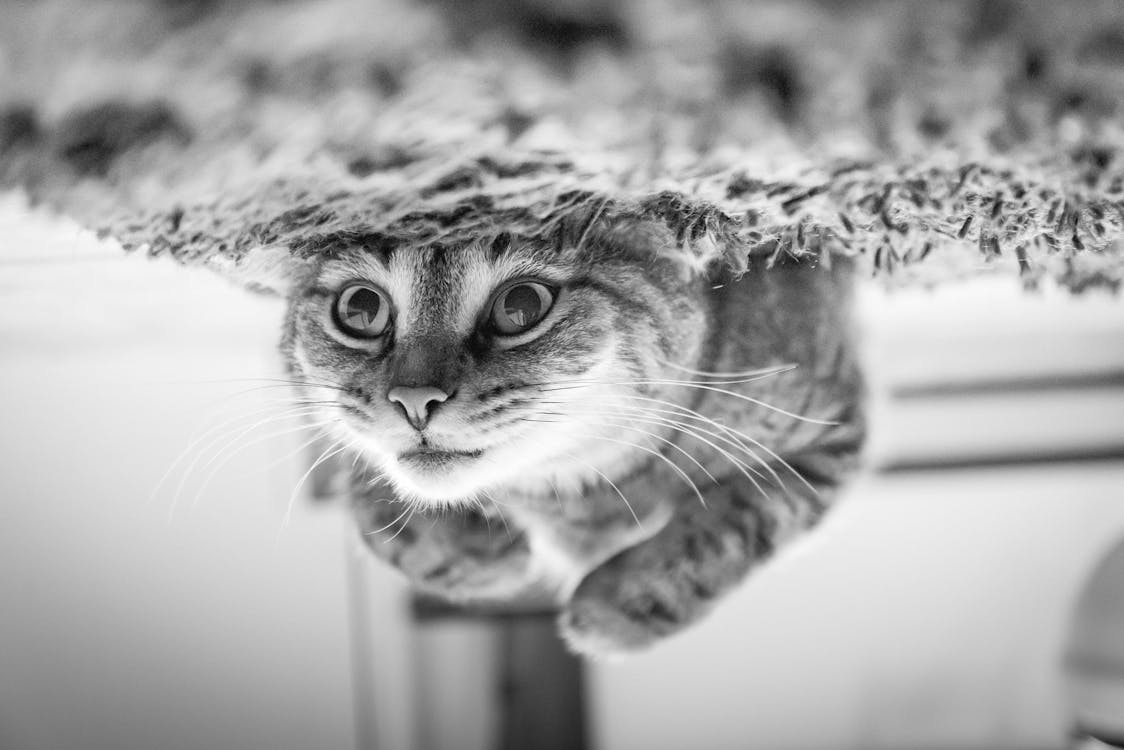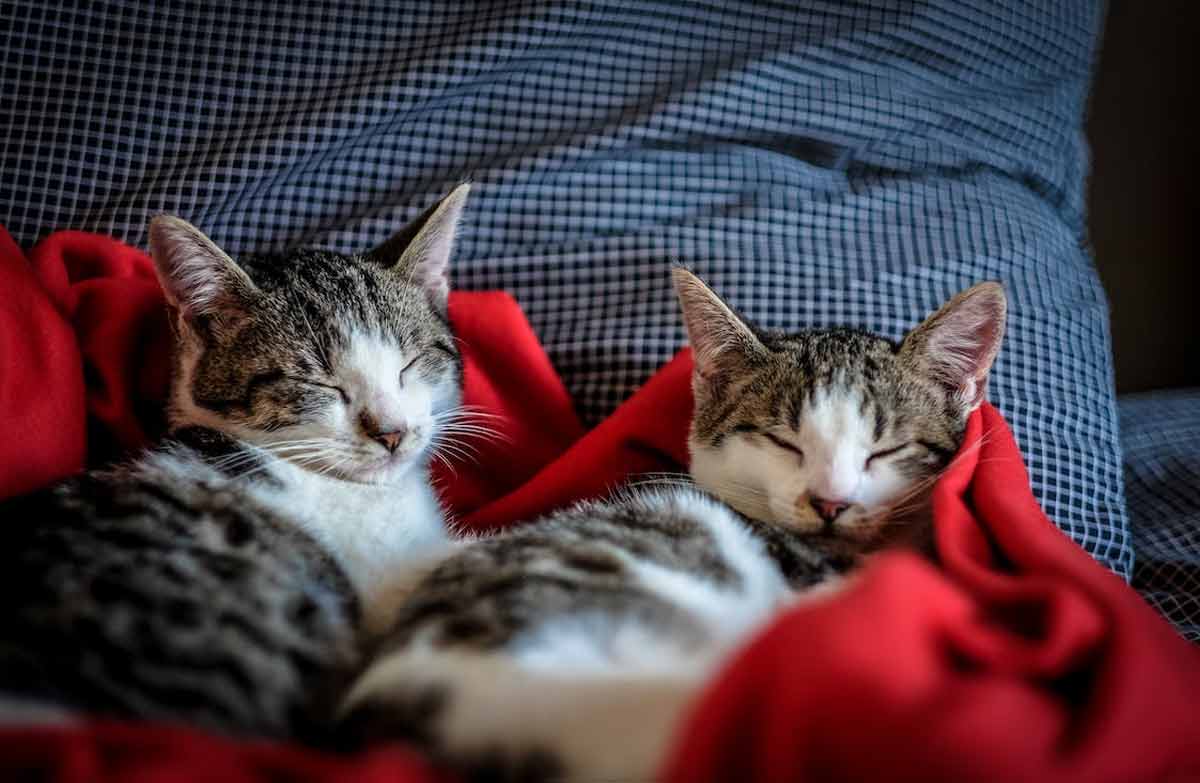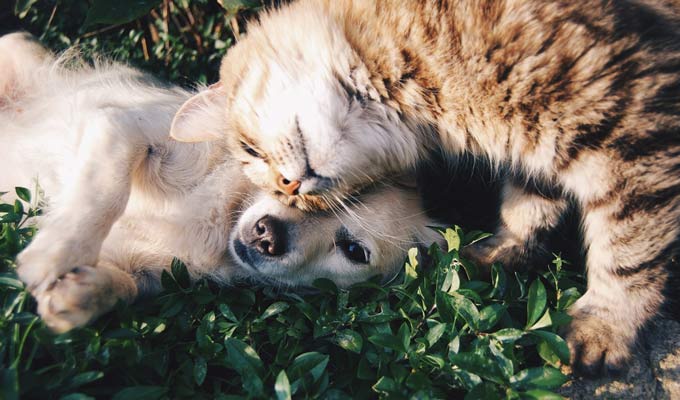What to know before getting a second cat? Remember the blissful purrs and playful swats that greeted you when you first brought your feline friend home? The joy, the companionship, the endless entertainment – it was purrfect! But now, a thought tickles your mind: could your home accommodate another ball of fluff, another set of mischievous eyes, another purring symphony? While the thought of doubling the feline fun is tempting, introducing a second cat requires careful planning and a deep understanding of cat social dynamics.
Before diving headfirst into kitty cuddles, let’s pause and ponder. This article serves as your comprehensive guide, helping you navigate the exciting yet potentially bumpy road of welcoming a new feline friend. We’ll delve into self-reflection, explore crucial considerations, and equip you with strategies for a smooth and successful introduction. Remember, preparation is key to ensuring a harmonious multi-cat household, not just for your existing cat but for your future furry addition and, of course, for yourself.
Self-Reflection: Are You Ready for Another Cat?
Bringing a new cat home isn’t simply adding another pair of paws to your life; it’s a commitment to another living being, with its own needs, personality, and quirks. Before embarking on this exciting journey, take a moment for honest self-reflection. Ask yourself these crucial questions:
- Lifestyle Compatibility: Does your daily routine allow for enough playtime, attention, and litter box maintenance for two cats? Can your living space accommodate another feline explorer, with designated scratching areas and climbing opportunities? Remember, financial responsibility doubles too – food, vet care, and potential litter box upgrades all come into play.
- Current Cat’s Personality: Is your resident cat known for their playful spirit or prefers a more solitary existence? Age also plays a role – introducing a rambunctious kitten to a senior cat might create unwanted stress. Consider temperament compatibility for a smoother integration.
- Interpersonal Dynamics: How will your family members react to another cat? Do they share your enthusiasm, or might potential adjustments create friction? Open communication and shared responsibility are key for a harmonious multi-cat household.
- Commitment and Patience: Remember, introducing cats takes time and patience. There might be initial hissing, territorial disputes, and litter box mishaps. Are you prepared to navigate these challenges calmly and consistently?
If your self-reflection paints a positive picture, you’re well on your way! Now, let’s explore some crucial considerations before welcoming your new feline friend.
Setting the Stage for Success
Preparation is the name of the game. Here’s how to create a welcoming environment for your new cat:
- Separate Spaces: Prepare a separate room for the newcomer, equipped with food, water, a litter box, a bed, and toys. This creates a haven to adjust without overwhelming them.
- Scent Swap: Exchange blankets or toys between the cats before their introduction, allowing them to get familiar with each other’s scent.
- Feliway Magic: Consider using Feliway diffusers, releasing calming pheromones that ease anxiety and promote positive interactions.
- Gradual Introductions: Start with visual introductions through a closed door or baby gate. Allow them to sniff and observe each other from a safe distance, gradually increasing proximity over time.
- Positive Reinforcement: Reward calm and curious behavior with treats, praise, and gentle play. Never force interactions – let them set the pace.
Remember, patience is key. Respecting individual needs and providing a stress-free environment will pave the way for a purrfectly harmonious multi-cat home.
Navigating Challenges and Fostering Harmony
While introductions can be smooth, potential bumps might arise. Here’s how to handle them:
- Hissing and Swatting: Don’t punish; it’s natural communication. Separate them briefly and reintroduce them when calmer.
- Litter Box Issues: Monitor usage and provide separate litter boxes to avoid territorial disputes.
- Food Guarding: Feed them separately and gradually move their bowls closer over time.
- Seek Professional Help: If you encounter difficulties, consult a certified animal behaviorist for personalized guidance.
Deciding on the Purrfect Addition
Personality Matters: Cats, like humans, come in all personalities. Think about your current cat’s energy level, playfulness, and social tendencies. A playful kitten might overwhelm a mellow senior, while a laid-back adult could be a great match for a calmer cat. Consider breeds known for specific temperaments, like the Ragdoll’s gentle nature or the Siamese’s chatty personality.
Age-Appropriate Adoptions: Kittens are bundles of energy, requiring constant attention and supervision. While adorable, their playfulness might not mesh well with an older cat who prefers peace. Adult cats offer a calmer presence and often adapt more easily to new environments. Senior cats bring wisdom and cuddles but might have specific health needs. Choose based on your lifestyle and your current cat’s personality.
Rescue or Breeder? Both options have their merits. Rescue organizations offer loving cats in need of forever homes, often already neutered and vaccinated. Breeders can provide specific breeds if you have strong preferences, but ensure they prioritize ethical breeding practices and health testing. Remember, adopting is always a noble choice, regardless of the source.
Preparing Your Home for a Paw-sitive Introduction
Separate Spaces, Shared Love: Territoriality is key in the feline world. Provide each cat with designated areas for food, water, litter boxes, and hiding spots. This minimizes competition and allows them to adjust at their own pace. Cat trees, shelves, and perches create vertical territories, offering escape routes and observation points for both felines.
The scent is the Bridge: Before the big introduction, strategically exchange familiar scents. Rub blankets or toys on each cat and place them in the other’s designated area. This helps them get accustomed to each other’s presence before the actual meeting.
Sensory Enrichment is Key: Boredom can breed tension. Ensure both cats have ample toys, scratching posts, and interactive activities to keep them occupied and stimulated. This reduces stress and encourages positive interactions.
The Big Day: Making Introductions Smooth and Safe:
Slow and Steady Wins the Race: Don’t rush it! Start with supervised introductions in neutral territory, like a spare room. Gradually increase proximity and duration based on each cat’s comfort level. Look for positive signs like sniffing, relaxed postures, and grooming.
Positive Reinforcement is Meow-gical: Reward calm behavior with treats, praise, and gentle petting. This builds trust and positive associations with the new arrival.
Body Language Tells the Story: Hissing, swatting, or flattened ears indicate discomfort. Separate the cats briefly, allowing them to cool down, and reintroduce later. Don’t force interaction – patience is key! How AI, ChatGPT maximizes earnings of many people in minutes
Integration Takes Time: Remember, this process can take days or even weeks. Be patient, and consistent, and provide positive reinforcement throughout. With careful planning and a loving environment, your feline family can soon be enjoying purrfect harmony.
Remember, welcoming a new cat is a commitment. By understanding their needs, preparing your home, and facilitating a smooth introduction, you can ensure a happy and harmonious multi-cat household for years to come.
Potential Challenges and Troubleshooting
Sharing resources isn’t always purrfect, especially for territorial felines. Be mindful of these potential issues:
- Resource guarding: This can manifest as growling, hissing, or even swatting when one cat feels another is encroaching on their food, water, litter box, or favorite hiding spot. The key is to provide ample resources for both cats. Place food and water bowls, litter boxes, and hiding spots in different areas of the house, ideally spread out and easily accessible. This minimizes competition and reduces stress.
- Litter box issues: Introducing a new cat can sometimes disrupt litter box routines. Monitor their usage and cleanliness closely. If you notice changes like going outside the box or increased frequency, address the issue promptly. Consult your veterinarian to rule out any medical causes and consider adding another litter box in a quiet location. Motivation – Mind – Success – Thinking – Productivity – Happiness
- Aggression or bullying: While some initial squabbles are normal, persistent aggression requires intervention. Seek professional guidance from a veterinarian or animal behaviorist. Separation strategies like introducing the cats gradually through scent swapping or supervised interactions can help. Additionally, behavior modification techniques like positive reinforcement can encourage peaceful coexistence.

Building a Purrfect Bond: Nurturing Harmony and Happiness
Bringing harmony and happiness to your multicat household goes beyond just providing resources. Here’s how to foster a purrfect bond:
- Individual attention: Don’t forget about quality time with each cat individually. Schedule dedicated playtime, cuddle sessions, and petting moments to maintain strong bonds with both your feline companions.
- Respecting personalities: Just like humans, cats have different personalities and preferences. One might crave constant attention, while the other enjoys their solitude. Observe their behaviors and cater to their individual needs by providing quiet spaces for those who prefer them and engaging toys for the playful ones.
- Playtime for bonding: Supervised playtime sessions are a fantastic way for cats to interact and build positive associations with each other. Use interactive toys, laser pointers, or food puzzles to encourage playful engagement and channel their energy constructively. Business – Money Making – Marketing – E-commerce
- Enrichment for all: Don’t forget about individual enrichment activities to keep boredom and frustration at bay. Scratching posts, climbing structures, and engaging toys cater to their instincts and provide mental stimulation for both cats.
Celebrating Success: Creating a Purrfectly Happy Home
With patience, understanding, and these helpful tips, your two feline friends can blossom into playful companions, enriching your life with double the purrs and cuddles. Remember, respect their personalities, provide ample enrichment opportunities, and shower them with love. Soon, your home will resonate with the symphony of playful swats, contented purrs, and the undeniable joy of a harmonious multi-cat family.
So, you’ve fallen head over heels with your feline companion, and the thought of expanding your furry family with another cat is tempting. But before diving headfirst into the world of double meows and playful chases, it’s crucial to consider the intricacies of introducing a new cat into your established home. This guide will equip you with the knowledge and strategies to navigate this transition smoothly, ensuring a harmonious future for your feline entourage. Health books, guides, exercises, habits, Diets, and more
Bonus: Share heartwarming stories of successful multi-cat introductions, inspiring readers to embark on this rewarding journey of feline companionship. Remember, with careful planning and a loving heart, your home can become a haven for double the purrs.
Understanding Your Current Cat
Begin by reflecting on your current cat’s personality and preferences. Are they social butterflies or independent souls? Do they thrive on routine or embrace change? Observing their behavior and potential anxieties is key to predicting their response to a new roommate.
Planning for Success
Preparation is paramount. Ensure you have enough resources for two cats, including separate litter boxes, food and water bowls, scratching posts, and cozy hideaways. Create designated spaces for each cat, allowing them to retreat if needed. Fitness – Meditation – Diet – Weight Loss – Healthy Living – Yoga
The Art of the Introduction
Introducing cats requires patience and a gradual approach. Start by keeping them in separate rooms, allowing them to scent-swap under closed doors. Gradually introduce supervised social interactions in neutral territory, using positive reinforcement and treats to promote positive associations. Monitor their body language and intervene if you see signs of stress or aggression.
Celebrating Milestones
Recognize and celebrate their progress! Reward calm interactions and positive body language with treats and praise. Remember, building trust and comfort takes time, so be patient and consistent in your approach. RPM 3.0 – 60% CONVERSION & Money for Affiliate Marketing
Long-Term Commitment
Remember, welcoming a new cat is a lifelong commitment. Be prepared to adjust your routine, provide ongoing attention to both cats and address any behavioral challenges that may arise. Don’t hesitate to seek professional guidance from a veterinarian or animal behaviorist if needed.
Final thought
Bringing a second cat into your life can be an enriching experience for both you and your feline companions. However, careful planning, understanding your cats’ needs, and a mindful introduction process are crucial for establishing a harmonious multi-cat household. By following these steps and approaching adoption thoughtfully, you can create a loving and enriching environment where all your furry friends can thrive. Cat accessories on Amazon
Bonus Tip: Read a heartwarming story about a successful multi-cat household, showcasing the joys of feline companionship and the rewarding journey of introducing new furry members into the family. Remember, with patience, understanding, and love, your home can become a haven for playful chases, purring contentment, and double the feline affection!
Other Interesting Articles
- How To Take Care Of A Kitten: A Guide For New Pet Owners
- Why Do Cats Chirp? Major Reasons Behind This Cute Sound
- 10 Common Reasons Why Cats Suckle? How To Discourage
- 12 Reasons Why Cats Meow So Much: How To Mitigate
- 9 Common Reasons Why Cats Chirp or Chatter: 5 FAQs
- Cat Zoomies: Why Does A Cat Get Them? When to Call a Vet?
- Burmilla Cat Breed: Profile, Traits, Grooming, Health, Care
- Aegean Cat Breed: Profile, Traits, Grooming, Health, Care
- American Wirehair Cat Profile, Traits, Grooming, Health, Care
- American Shorthair Cat Profile, Traits, Grooming, Health, Care
- American Polydactyl Cat Profile, Traits, Grooming, Health, Care
- American Longhair: Profile, Traits, Grooming, Health, Care
- American Curl Cat Profile, Traits, Grooming, Health, Care
- Asian Semi-Longhair Cat Profile, Traits, Grooming, Health, Care
- California Spangled Cat: Profile, Traits, Grooming, Health, Care
- Burmilla Cat Breed: Profile, Traits, Grooming, Health, Care
- British Shorthair Cat: Profile, Traits, Grooming, Health, Care
- Brazilian Shorthair Cat: Profile, Traits, Grooming, Health, Care
- Bombay Cat Breed: Profile, Traits, Grooming, Health, Care
- British Longhair Cat: Profile, Traits, Grooming, Health, Care



